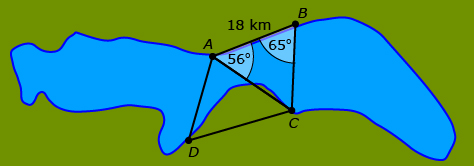Lesson 2
1. Lesson 2
Module 1: Trigonometry
Lesson 2: The Sine Law
Focus

iStockphoto/Thinkstock
Did you notice that in the previous lesson you were only working with right triangles? Not all problems involve right triangles. For instance, the original maps of Britain were based on survey work done between 1783 and 1853. In the early twentieth century, the British government realized that their maps were not completely accurate and decided to create new maps for all of Britain. The triangulation method of surveying was used to complete the Retriangulation of Britain (1935–1962). Concrete pillars called trig points were created all around the country. These pillars became the vertices of triangles that were used to create accurate maps of Britain. Trigonometry played an important role in helping to calculate the angles and distances between trig points.
Trig point locations were chosen for maximum visibility—the British didn’t have the luxury of creating right triangles. As a result, math that is valid for all triangles, including oblique triangles, was used.
![]()
Remember that an oblique triangle is a triangle that does not have a 90° angle.
Today, if you were to use triangulation to measure distances around Lesser Slave Lake, you might end up with trig points and corresponding triangles at these locations:

There are no right triangles in this diagram, only oblique triangles. You need to be certain that the method for solving this problem is valid for oblique triangles.
This lesson will help you answer the following inquiry questions:
- Do the Pythagorean theorem and the primary trigonometric ratios (sine, cosine, and tangent) work when solving oblique triangle problems?
- What formulas can be used to solve for angles and sides in any triangle (including oblique triangles)?
Assessment
- Lesson 2 Assignment
All assessment items you encounter need to be placed in your course folder.
Save a copy of the Lesson 2 Assignment to your course folder. You will receive more information about how to complete the assignment later in this lesson.